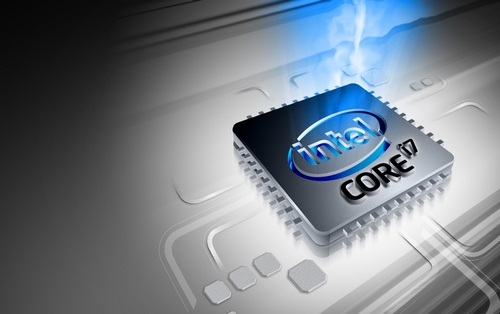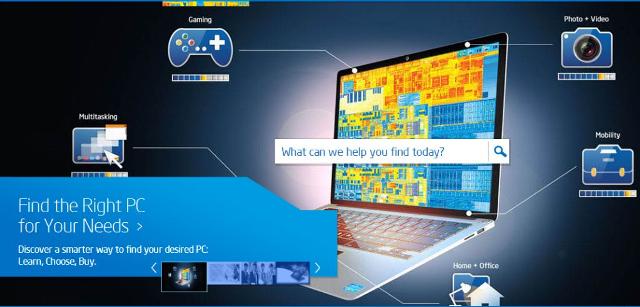The Marketing mix of Intel Corporation analyses the 4Ps of Intel Corporation, including Product, Price, Place, and Promotions. Intel Corporation is popularly known as Intel and is a public company with American origins. This multinational company deals in technology and semiconductors and has headquarters in California, the United States. Intel is the highest and largest manufacturer of semiconductor chips in the global market in terms of revenue.
The company was founded in 1968 by its co-founders, Robert Noyce and Gordon Moore, pioneers of semiconductors. The company combines its dual abilities to design advanced chips with manufacturing capability. In 2015, Intel was ranked 56th as the most valuable brand in the world. Some significant competitors of Intel are as follows.
For PC chipsets –
- Advanced Micro Devices
- Silicon Integrated Systems
- VIA Technologies
- Nvidia
For Networking-
- NXP Semiconductors
- Marvell Technology Group
- Infineon
For Flash memory-
- Samsung
- Toshiba
- SK Hynix
About Intel
- Type: Multinational technology company
- Industry: Semiconductors and computer systems
- Founded: July 18, 1968
- Founder: Gordon Moore and Robert Noyce
- Headquarters: Santa Clara, California, United States
- Area served: Worldwide
- Key people: Pat Gelsinger (Chairman) and Pat Gelsinger (CEO)
- Number of employees: 109,000
Table of Contents
Intel Product Strategy
The earliest products of Intel were random-access memory and shift-register memory integrated circuits, and during the 70s, the company became a leader in the ROM, SRAM, and DRAM markets. Later, it developed its first microprocessor. Intel’s marketing strategy revolves around Intel Inside, emphasizing technological advancements in its processors. With innovative products for personal computers and graphics chips, Intel invests heavily to maintain brand loyalty and dominate the market.
The new Product Mix of Intel in 2024 is as follows (Source).
- Intel Core 14th Gen HX-series Mobile Processors: These are designed for high-performance needs, catering to gamers, creators, and professionals who require powerful mobile computing.
- Intel Core U Mobile Processor Family: Targeting mainstream mobile PC users, this series focuses on efficient, balanced performance in thin-and-light devices.
- Intel Core 14th Gen Mainstream Desktop Processors: These processors are developed for mainstream PC users and businesses across various vertical markets, offering powerful performance and robust platform features.
Intel Pricing Strategy
Pricing policies are dependent on numerous factors. Intel has achieved the desired success, and its pricing strategies have played an essential part in its popularity. Intel is a leader in the semiconductor industry and strategically shapes its marketing efforts with a focus on customer loyalty. Intel leverages content marketing and ensures brand recognition by premium pricing and a potent marketing mix, including social media platforms. Through effective distribution and pricing strategies, Intel remains a powerhouse in the industry, attracting software developers and securing a prominent place in the competitive landscape.
The company occupies nearly 90% of its share as a manufacturer of semiconductors. It allows its competitors to set a base price and makes its pricing strategy based on these rates. Its cost price is less because of mass production, so it manages higher revenues even after setting lower prices.
Here’s the pricing strategy of Intel:
- Value-Based Pricing: Aligns prices with perceived product value, with premium prices for high-performance processors and budget-friendly options for cost-conscious consumers.
- Competitive Pricing: Adapts prices to stay competitive while highlighting product quality and performance.
- Market Demand: Considers market demand and adjusts pricing accordingly.
- Manufacturing Costs: Accounts for manufacturing costs to set optimal price points.
- Product Positioning: Positions products strategically in the market to meet diverse customer needs and maintain leadership in the semiconductor industry.
Intel Place Strategy
Intel has its base in Santa Clara, with operations spread over every part of the world. Its most significant workforce concentration is Washington County in Oregon, with 18,600 employees at several branches. Several facilities are in 63 countries, including Argentina, Russia, India, Ireland, Malaysia, Costa Rica, and China. Intel is the largest private employer in Oregon and the most significant industrial employer in New Mexico.
Here’s the place strategy of Intel.
- Global Presence: Intel has a widespread global presence, with offices, manufacturing facilities, and research centers in numerous countries. This allows them to serve diverse markets and collaborate with partners worldwide.
- Headquarters in the United States: Intel is headquartered in Santa Clara, California, serving as its primary operational hub and showcasing its commitment to innovation in the tech industry.
- Manufacturing Facilities: The company has manufacturing plants in various countries, including the United States, Israel, Ireland, and China, ensuring efficient production and supply chain management.
- Local Engagement: Intel engages with local communities and governments in its operating regions, fostering collaborations that benefit both the company and the local economies.
- Distribution Channels: Intel utilizes a robust network of distributors, retailers, and partners to make its products accessible to consumers and businesses globally, ensuring a seamless supply chain and support infrastructure.
Intel Promotion Strategy
Branding a technical product like microprocessors has always been tricky. One of the reasons that Intel is the favorite brand of Marketers is because it teaches you how to market a product you cannot see. The challenge in front of Intel was that the product was inside the CPU, and customers could not see that, so it could not be marketed in traditional ways. However, by assigning its qualities of speed and performance, Intel has leveraged its brand to a very high brand equity.
Promotions are an essential tool for any company, and they are pretty practical and handy if appropriately utilized. Intel started a mass marketing policy to make people aware of its brand. In 1991, it decided to use a branding and marketing campaign known as Intel Inside, and this type of ingredient branding established the company as a popular household name. Intel later made a deal with MicroAge where both would establish each other’s credentials. This momentous decision increased both companies’ sales and brand awareness, resulting in higher revenues. Intel adopted Intel Inside as its primary branding tool and started rolling it out in numerous advertisements.
A five-note jingle was launched as a promotional activity, and its success could be heard in more than one hundred and thirty countries worldwide. This advertising campaign created awareness and brand loyalty amongst consumers. In 2008, the company launched its campaign in online media, which proved to be a huge success story. It has paid attention to details like packaging, discounts, and advertising to make this brand most popular and visible through every medium. Mouth publicity has also favored this brand as the inside logo is necessary for every buyer regarding the best product.
Some Recent Video ads and Print ads for Intel are:
https://youtu.be/DLONB9Sy1Rk
Liked this post? Check out the complete series on Marketing Mix

